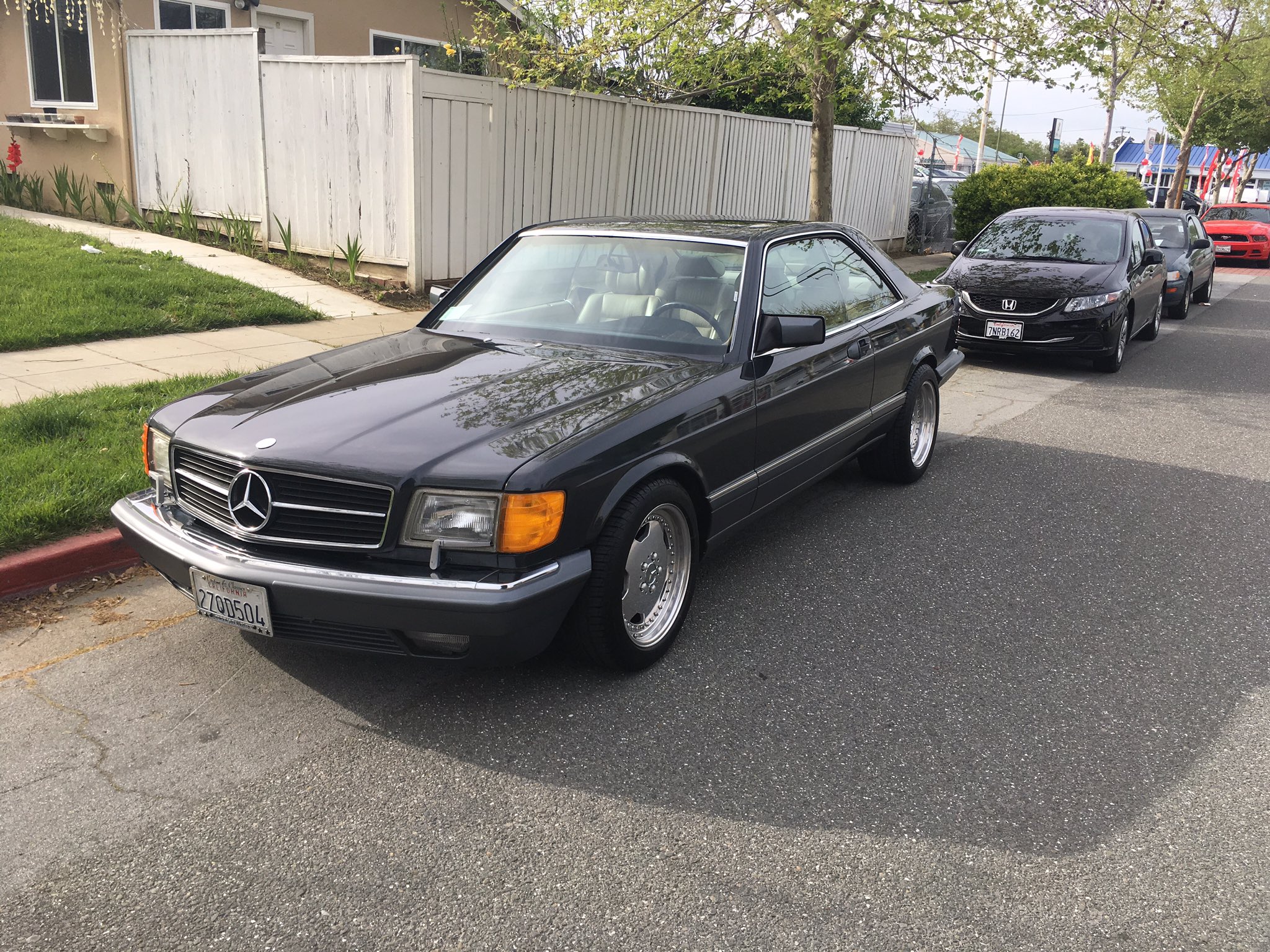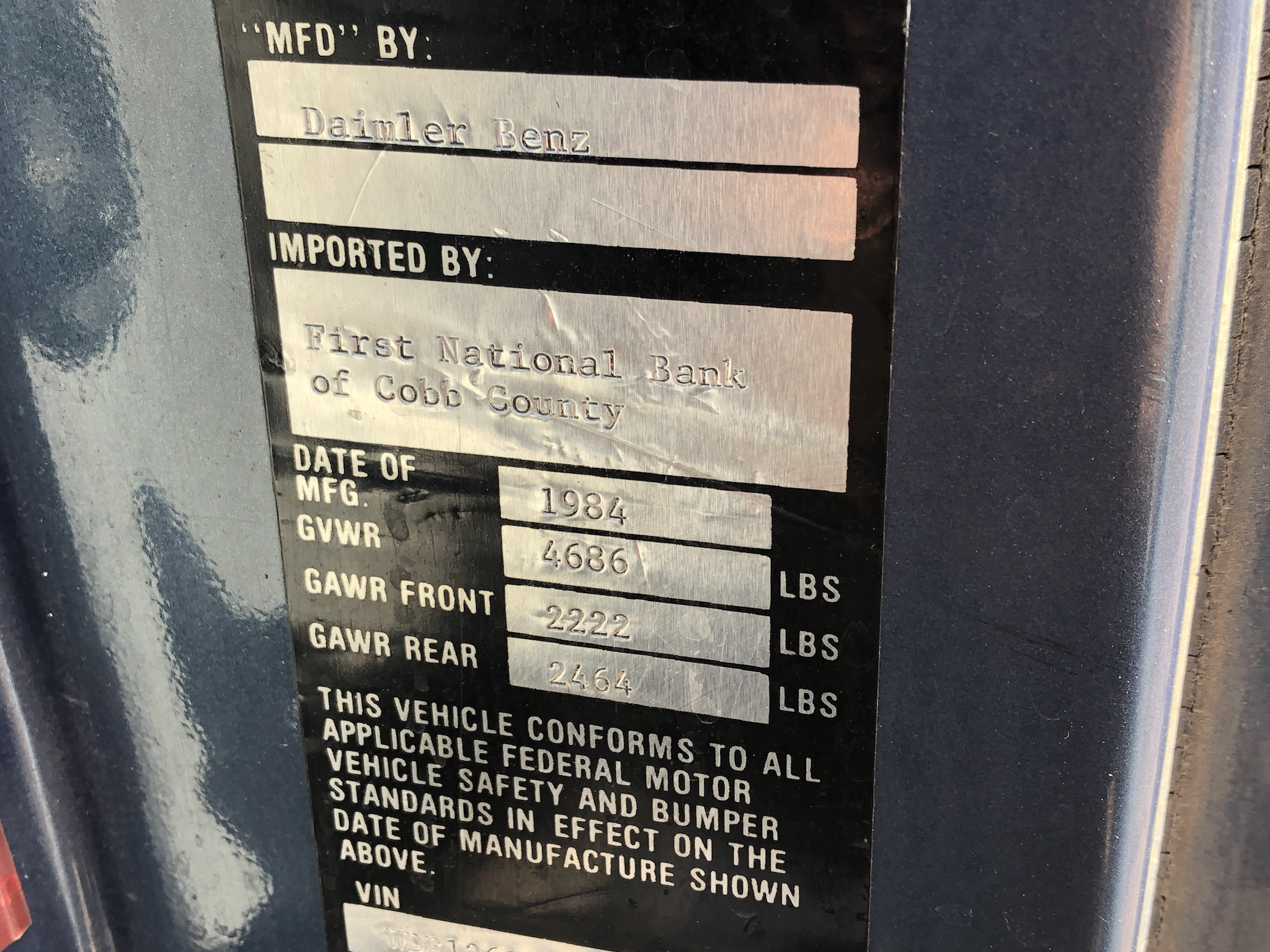Buying a classic

Like a lot of people, I’m always looking at cars on the internet. Even when you’re really happy with what you already have, I love seeing what else is out there and what the prices are like.
For a long time, I’ve wanted a Mercedes-Benz 560 SEC. They’re a little older and not exactly fast, but I think they’re one of the best looking cars Mercedes-Benz ever made. Besides looking great, they’re really comfortable and are great for cruising. You can put all four windows down and there’s no B-pillar, which means you get really good views like a convertible, but you’re still in a coupe.
Considerations I had
Body style and facelifts
The 560 SEC has the Mercedes-Benz chassis code “W126” and basically has two “generations”. 1985 and earlier are often referred to as “Gen 1” while 1986 and newer are “Gen 2”. When looking at older or vintage cars, I personally prefer cars that are at the end of the production cycle. The W126 coupe started production in 1981 and continued to be made until 1991. Along the way, tweaks are made to address issues that come up- fixing design flaws, attempting to make the car more reliable, meeting new safety standards that come up, and of course (towards the end of the product life cycle) refreshing the appearance.
Clean Carfax
My personal preference is to always buy cars with a clean Carfax. When you’re buying a car, especially sight unseen, you have no idea what issues the car may or may not have. Having a clean Carfax (no accidents reported, etc) doesn’t mean that the car has never been in an accident. But I believe it’s better than buying a car with a Carfax showing an accident.
Having a reported accident causes significant depreciation for the car’s value. Of course, the owner might not report what they think is a “minor” accident. Or it’s possible the car sat for a long time and has damage from the elements, like water and sun damage.
Having a clean Carfax doesn’t mean the car is problem free, but it does at least reduce the number of problems you can expect.
Option codes, model numbers, and “Gray market”
You can run the VIN on a site like https://datamb.com and see what options were associated with the car. Higher trim levels (ex: 560 vs 420) typically include more options by default (ex: heated seats). It’s also worth noting that while Daimler still sells Mercedes-Benz with manual hand-crank windows, MBUSA only imports higher optioned cars into the US (leather seats, power windows, etc).
Some options worth noting (denoted by a 3-digit numeric code):
540- rear window roller blind (noticeable by a long black bar in the middle of the window)614- yellow colored fog light reflectors (and for sedans, courtesy lights on rear doors)822-ECEorRUF; increased horsepower (~300 horsepower)
The options available can make the car more valuable. It’s good to know what came with the car originally, because some owners might retrofit parts to their car (making the option look stock). Knowing what has and hasn’t been modified is an important factor to me when I’m trying to minimize the risk of buying a car online.
In the “Gen 1” range (1985 and prior), MBUSA only imported a few models to the US, like the 300SD, 380SEL, and 380SEC. Pre-1985, it’s fairly common to find “gray market” cars where an American buyer purchased a model which was not available in the US (500SE, 500SEL, 500SEC, etc) direct from the manufacturer in Europe and worked with an importer to “federalize” (modify to meet US specifications) the car. You can check in the drivers-side door jamb and you should see a stamp.

After 1985, MBUSA expanded the model selection available in the US market: 420SEL (replacing the 380SEL), 560SEL, and the 560SEC (the 420SEC which replaced the 380SEC was not available in US markets). Although it’s rare, you will occasionally see a “Gen 2” gray market car.
Knowing if the car is gray market is important because it lets you know the car went through the “federalization” process. The quality of how this was executed is up to the business which imported it. Each car going through this process will commonly have a few things done:
- Changing instrument cluster from kilometers to miles
- Removing the glass headlamps in favor of the DOT compliant plastic sealed beam headlamps
- Replacing the rear tail lights with ones which have a red reflector in the corner
- Replacing the small bumpers with larger US spec bumpers
There are other things which are done and not every importer did all of the above. Some folks just put extra reinforcement in the existing European spec bumpers to try and get past the federalization process. Gray market status is a good thing to look for when considering cars online.
Identifying expensive damage
When you can only look at a car online, it’s important to look for expensive damage. Cracks in the dashboard, scratches on the chrome or anodized aluminum parts (“brightwork”), visible rust spots. The hood and trunk on the coupe are aluminum, but check the other panels closely for rust or Bondo repairs (have a fridge magnet handy). The W126 in particular has a notorious rust spot under the rear window that needs to be examined. Also check for cracks or damage to the wheels. Condition of the wood. Missing or broken trim pieces. You can also see how the car sits- the 560 cars have a self-leveling suspension and when things are working well, the back end of the car should NOT be sagging. Inside the car, the headliner is also something you’ll want to look at to see if there is any sagging (common on the coupe).
Condition of the paint is also a really important thing to look for (unless you’re already planning to repaint). Similar to how you can look at options, the VIN will show the original paint color and interior color. Just making sure the paint is good is important enough, but if you want to get serious you can look for areas which commonly are taped off or have overspray (under the hood, around door jambs) if pictures are available. On these particular cars, the side cladding on the car should be a different complementary color to the body color. If the plastic side cladding matches the body color, you know there has been some paint work.
Looking for modifications
Some modifications are easy to spot - wheels for example. The “Gen 1” W126 cars came with a “bundt” style wheel and the “Gen 2” cars came with a 15-hole wheel. Anything other than these is likely not “from the factory” stock. The head unit is another easy to identify part. If the car doesn’t have the original Becker unit, there’s a good possibility that someone has cut and spliced the wiring harness. If you see this, you can also look in the trunk for an amplifier (amp). Folks usually mount an amp against the rear wall of the trunk. This is fine if they do it on the left side (drivers side in the US), but the gas tank is behind there and can be pierced if you mount it on the right side. If an amp is ran, there are likely RCA cables ran to the head unit and the people who did the job probably didn’t run them nicely through the floor conduit. This is where you’ll often find hack jobs where the carpet pops up or things are electrical taped into place.
When the hood is popped, you should be able to spot any aftermarket items. When an amp is added, you’ll see an additional power cable going to your battery. Even though most US-spec W126s have a factory standard alarm, aftermarket car alarm systems were installed and will typically have components drilled into the body under the hood (look for a horn). Related to the stereo, you can also check the console area including the coin tray to see if the previous owner cut out anything. It’s fairly common to see someone do this to have USB ran. If they did a good job, it’ll be run under the center console and hidden in the roll box (standard on 1989 and newer models).
The purchase experience
In April of 2017, I ended up finding one which looked like it was ready to go - Exterior color 199 “blau-schwarz”, interior is a nice “Mushroom” beige color, and it even has real AMG 3-piece OZ wheels. I made what I thought was a low offer - but realistic given I’m buying this car sight unseen with no pre-purchase inspection. After some back and forth, my offer of $8,500 USD was accepted.

I flew out to Oakland the next week on a $75-dollar flight. When I got to see the car in person and as I started to get to know the car, two things became pretty clear to me:
- the photos were hiding a lot of problems
- I had a lot to learn about these cars